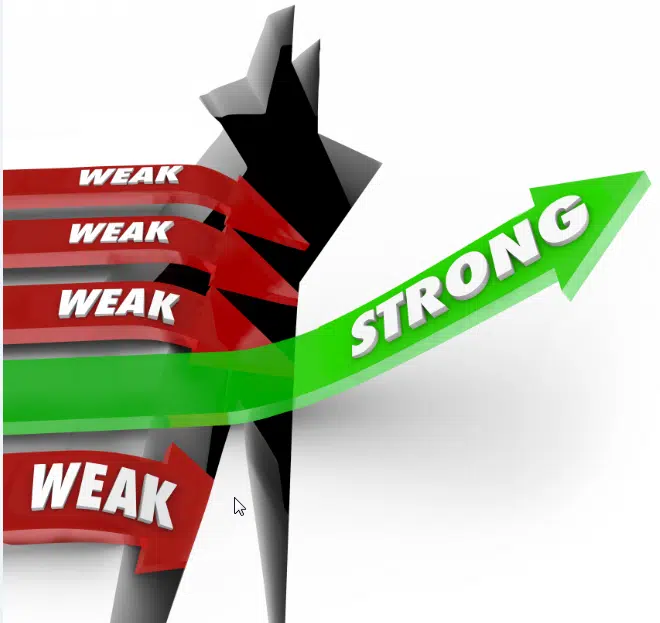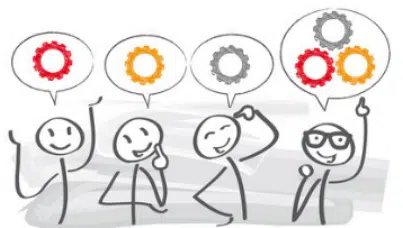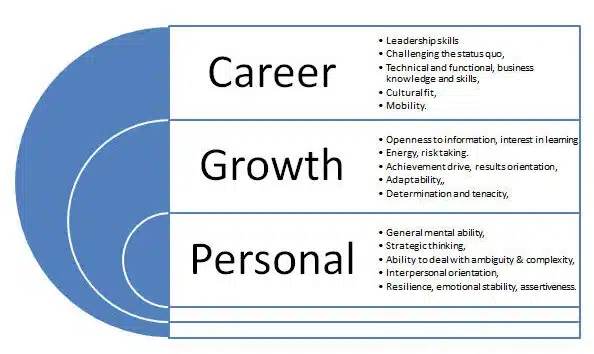Who is the talent - what is "potential"
“Not all talent pipelines are created equal, nor do all talent pipelines operate
effectively. There are cracks, blockages and breaks that prevent the right
talent from rising to the top and reaching their own – and the organization’s –
potential.”1
Why identify Individual Potential
All HR practitioners are keenly aware of the shortage of talent and the need to build a talent pipeline.
There is strong interest from many organisations in identifying and creating programmes for ‘hi potentials’. Vendors and consultants are heavily promoting such programmes to senior management and boards who, prompted by investors, have an increasing imperative to ensure a sustainable supply of talent.
There are several possible approaches to talent development that can be deployed simultaneously;
- Develop particular individuals for specific critical positions; i.e. CEO. Whilst it is often assumed that critical positions are senior in the hierarchy, frontline roles and support roles may also be critical.
- Develop a group of individuals along a specialized technical pathway
- Develop a group of individuals toward a general area such as leadership
Accordingly many organisations now have multiple talent pools. The first step in getting a talent pipeline working effectively is to have a reliable and well validated means of assessing individual potential.

What then is 'potential'
The challenge is to assess how people are likely to be able to progress in terms of job size and scope, not just in the next 12 months, but over a 3 – 10 year period. Some organisations like to estimate the maximum level they think an employee can reach. This evaluation is a moving target since both future roles and future individual capabilities are evolving continuously.
In the work environment “potential” is typically used to indicate the perception that an individual is likely to be able to assume, in the future, a role of greater complexity, broader scope and/or increased responsibility, commonly a role at least 2 levels up.

The Agility Concept
This is of course an overly simplistic view. Sophisticated organisations recognize that the criteria for individual potential will vary depending on what is envisaged for the future in terms of roles.
There is huge interest in the concept of an individual’s potential to learn, “learning agility” a label given by one vendor, and how it can best be measured. Whilst not PC, measures of general mental ability that assess openness to information, long term memory, conceptual ability and so on are well validated as very strong indicators of learning ability.
Other Definitions
Organisations that have not accepted proprietary definitions offered by vendors differ in the definitions of potential they use. 13 major organisations surveyed in 2003 all had different definitions 3.
A survey by Silzer and Church 5 of 20 organisations found that 35% of organisations tend to define potential primarily according to the ability to move into senior leadership and management roles. 25% of organisations define potential primarily as the capability to move to up at least 2 levels. 25% define potential as the capability to take on roles of broader scope, and to move into leadership positions. Finally 10% of organisations defined potential as a track record of exceptional performance.4
Most of the organisations used several definitions simultaneously.

Silzer and Church5 reviewed themes from many of the current models of potential and found that variables could be grouped into clusters;
- Cognitive skills
- Personality variables
- Learning
- Leadership
- Motivation
- Other
In fact most of these qualities can be assessed through quality self-report personality tests and validated with independent feedback from co-workers.
They suggested that these factors can be arranged in a hierarchy of foundation, growth and career dimensions.
Talent Identification Model


It therefore makes sense to look in depth at the factors that influence growth and the application of these into the acquisition of new skills. This means tracking the development of individuals over time in some detail, and re- evaluating the hi-potential pool on an ongoing basis.
In our experience this is not something that organisations do well, lacking a platform that will capture and integrate such information in the depth required.
Pros and Cons of identifying "Hi-Potentials"
There is ongoing debate about the pros and cons of identifying hi potentials. Whilst ensuring that hi potentials know they are being developed for advancement may lessen the likelihood they look elsewhere, it may also increase the chances of them being head hunted.
Is it possible to keep the identification secret? Will other staff pick up on the cues; the projects, assignments and development experiences given to a select few, and not themselves?
If they do will this serve as a potential source of disengagement?
This decision will depend on the nature of your industry and the culture of your organization.

References
1 Ganz, J. (2006). Talent development: The architecture of a talent pipeline that Works. Ivey Business
Journal Online. www.iveybusinessjournal.com.
2 Rogers, R.W. & Smith, A.B. 2007 Finding future perfect leaders. Spotting executive potential.
Development Dimensions International.
3 Karaevli, A. & Hall, D.T. 2003 Growing leaders for turbulent times; is succession planning up to the
challenge? Organisational Dynamics32(1) 62-79
4 Silzer, R. F., & Church, A. H. (in press). Identifying and assessing high potential talent: Current organizational
practices. In R. F. Silzer, & B. E. Dowell (Eds.) Strategy-driven talent management: A leadership imperative
(pp. 213280). Jossey-Bass: San Francisco.
5 Silzer, R. F., & Church, A. H. 2009 The Pearls and Perils of identifying Potential. Industrial and
Organisational Psychology 2 377-412

